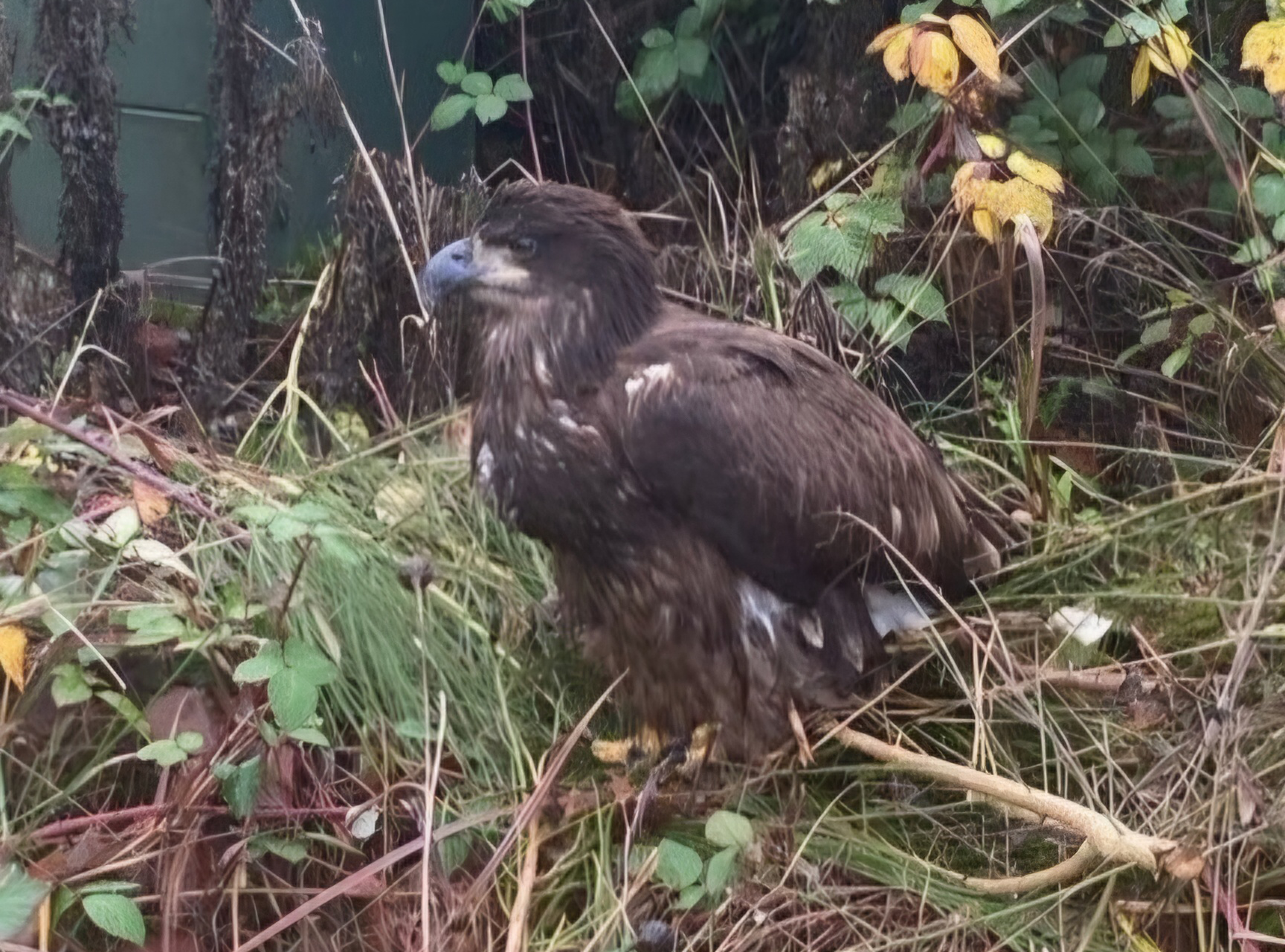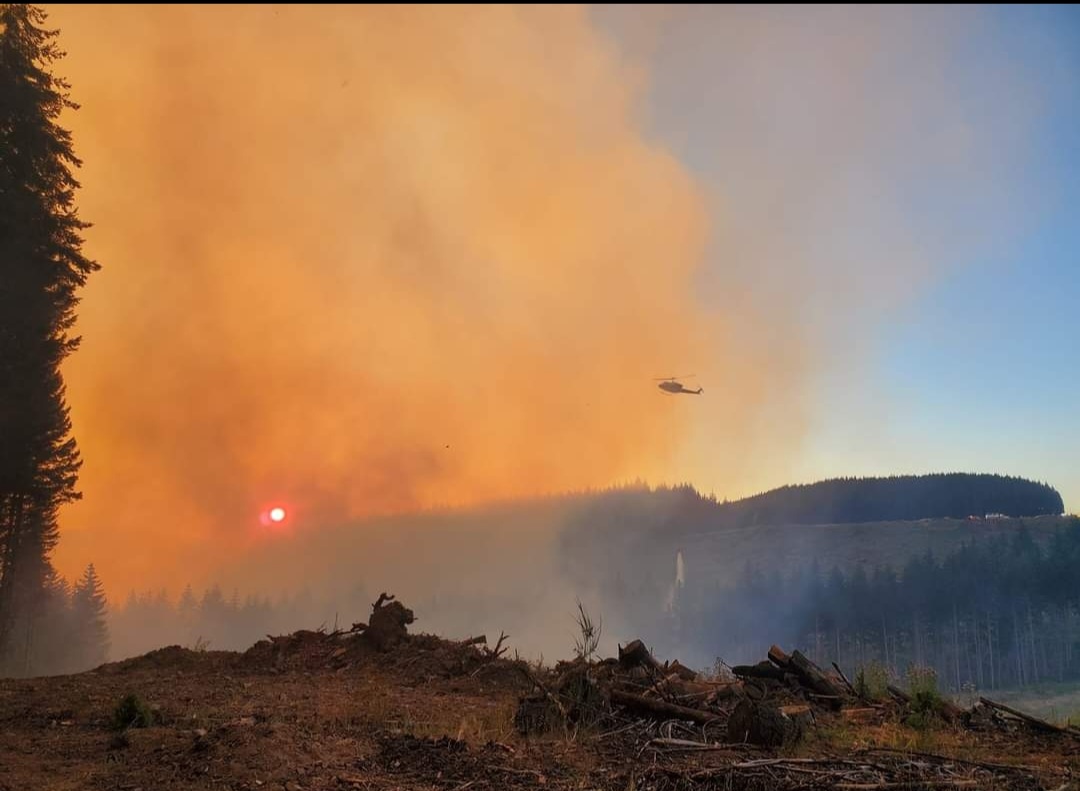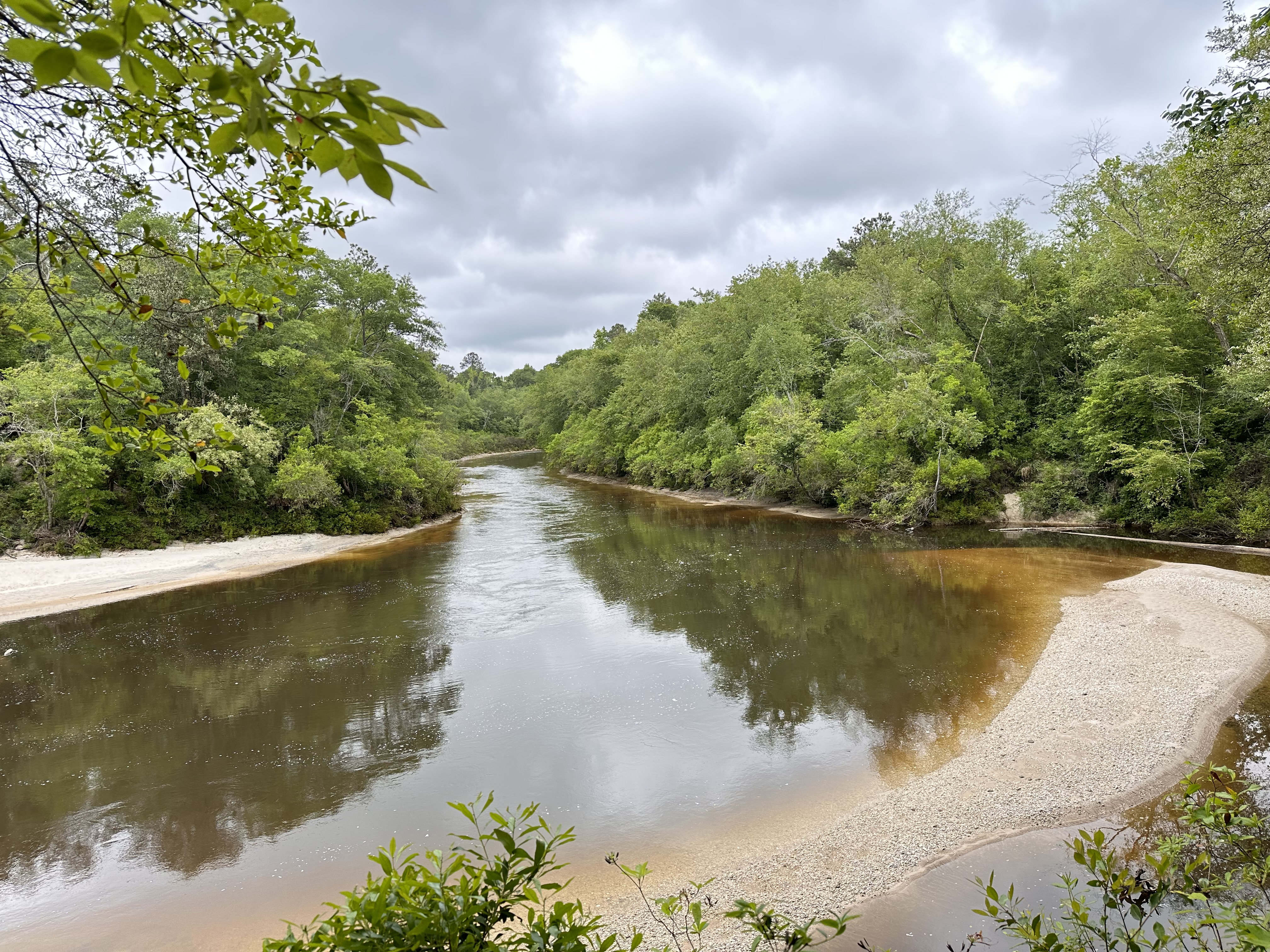
A photo of the injured eagle on the ground.
Though bald eagles were removed from Oregon’s Endangered Species List in 2012, the birds are still noteworthy as they fly over our South Valley timberlands. Our staff biologists consider them a sensitive species and track their movements in the area. So when a crew spotted an injured eagle on the side of a logging road last November, they moved quickly to help.
“It was hunkered down in a ditch near a blackberry bush, moving its wing in a way that made it seem injured,” says Simon Podwika, forester. “It was nearly sunset, and we were 30 minutes away from any cell signal that would allow me to call for help.”
Simon had no choice but to leave the bird where it was. He noted the coordinates, flagged an adjacent bush with blue and orange ribbon, and headed back toward Springfield to make the call.
Luckily, South Valley just happens to have its very own experienced raptor handlers. The 24 hours that followed Simon’s discovery saw a bold capture with a beach towel, some dirty bird looks and a transfer to a local rescue center, where the eagle has become an amusing presence as it recovers.
“We were glad the rescue went so smoothly, but I definitely felt the adrenaline,” Matt says.
NAVIGATING A PRICKLY SITUATION
Samantha “Sam” Hanson, wildlife technician, worked at a raptor rehab center in North Carolina for two years prior to joining our Oregon Timberlands team. When she received Simon’s call, she and Matt Hane, terrestrial resources unit manager, headed out to the coordinates.
“We crawled around in the blackberry brambles looking for the bird but had no luck,” Sam says. “It probably retreated into the bushes after dark to protect itself from other predators.”
The next day, a member of Simon’s crew spotted the eagle again, just down the road from its original location.
“I had one of my road blocker contractors stay nearby to make sure it didn’t disappear into a bush again and contacted Matt over the CB radio,” Simon says. “He gave me the number for a raptor rescue center, so I called when I was able to find service, and they said they’d send someone to pick it up.”
Knowing the remoteness of the location and the rugged state of the unmarked roads, Sam and Matt decided to step in and help out the raptor center.
“Normally, we advise people to leave injured animals where they are and let the rescue experts handle the situation,” Sam says. “But Matt and I have experience, and it was getting dark again, so we decided to capture it ourselves.”
An x-ray taken at the Cascade Raptor Center showing the break in the eagle’s wing.
A DIRTY EAGLE-EYE
After a thorough risk assessment, the duo put on protective gear and got a cardboard box out of the back of Sam’s truck. Matt held a beach towel, ready to wrap up the raptor and wrangle it into the box.
“We were able to just kind of pounce on it from behind,” Sam says. “It didn’t fight me very much, but it looked around, opened its mouth really wide and gave me a really dirty stink-eye.”
Sam and Matt then met with the raptor rescue crew on a county road and transferred the bird to them.
“Simon and his people followed their sensitive species training to a tee and did a great job communicating with us to make sure the eagle received the care it needed,” Matt says.
Sam agrees.
“I had a few previous situations where injured birds of prey were spotted along the road, but this was my first live rescue,” she says. “It was a nice win at the end of the year, and I’m really proud of everyone involved for handling it so professionally.”
“Many of us are friends, so it’s really easy to work across departments to find solutions,” Lyndcy says.
A BIG BIRD PERSONALITY
Since its rescue, the bald eagle has received excellent care at the Cascades Raptor Center in Eugene, which we’ve supported with $10,000 grants from our Weyerhaeuser Giving Fund in 2023 and 2024.
“We want to give a special shout-out to the Cascades Raptor Center,” Sam says. “They were an awesome partner — and they offer tours of their facilities for the public to see the owls, eagles, falcons and other birds in their care. It’s a great place to visit and support.”
Staff have been providing updates to Sam since the eagle was given into their care.
“They x-rayed the eagle’s wing and found that it was badly broken, so they cleaned it up and put some pins in,” Sam says. “Now, it’s a waiting game to see whether it heals enough to allow him to be released back into the wild. We have our fingers crossed, but if he can’t, he’ll find a home at a sanctuary.”
Though Simon’s crew initially thought the bird might be a golden eagle, which is far rarer in the area than bald eagles, it turned out to be a juvenile that hasn’t yet developed its distinctive white cap.
“Apparently, our eagle friend is quite an entertainer!” Sam says. “The raptor center staff say he has a huge personality and devours all the food in his path. We’re just so happy that everything came together for a happy ending.”


